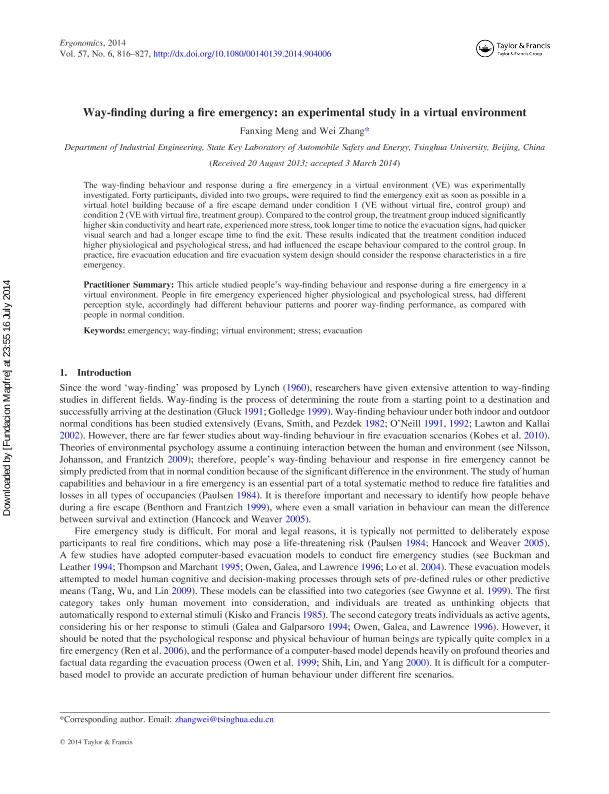Way-finding during a fire emergency : an experimental study in a virtual environment

Contenido multimedia no disponible por derechos de autor o por acceso restringido. Contacte con la institución para más información.
| Tag | 1 | 2 | Valor |
|---|---|---|---|
| LDR | 00000cab a2200000 4500 | ||
| 001 | MAP20140025695 | ||
| 003 | MAP | ||
| 005 | 20140724124911.0 | ||
| 008 | 140717e20140602esp|||p |0|||b|spa d | ||
| 040 | $aMAP$bspa$dMAP | ||
| 084 | $a875 | ||
| 100 | 1 | $0MAPA20140012114$aMeng, Fanxing | |
| 245 | 1 | 0 | $aWay-finding during a fire emergency$b: an experimental study in a virtual environment$cFanxing Meng, Wei Zhang |
| 520 | $aThe way-finding behaviour and response during a fire emergency in a virtual environment (VE) was experimentally investigated. Forty participants, divided into two groups, were required to find the emergency exit as soon as possible in a virtual hotel building because of a fire escape demand under condition 1 (VE without virtual fire, control group) and condition 2 (VE with virtual fire, treatment group). Compared to the control group, the treatment group induced significantly higher skin conductivity and heart rate, experienced more stress, took longer time to notice the evacuation signs, had quicker visual search and had a longer escape time to find the exit. These results indicated that the treatment condition induced higher physiological and psychological stress, and had influenced the escape behaviour compared to the control group. In practice, fire evacuation education and fire evacuation system design should consider the response characteristics in a fire emergency. | ||
| 773 | 0 | $wMAP20100019818$tErgonomics : the international journal of research and practice in human factors and ergonomics$dOxon [United Kingdom] : Taylor & Francis, 2010-$x0014-0139$g02/06/2014 Volumen 57 Número 6 - junio 2014 |

